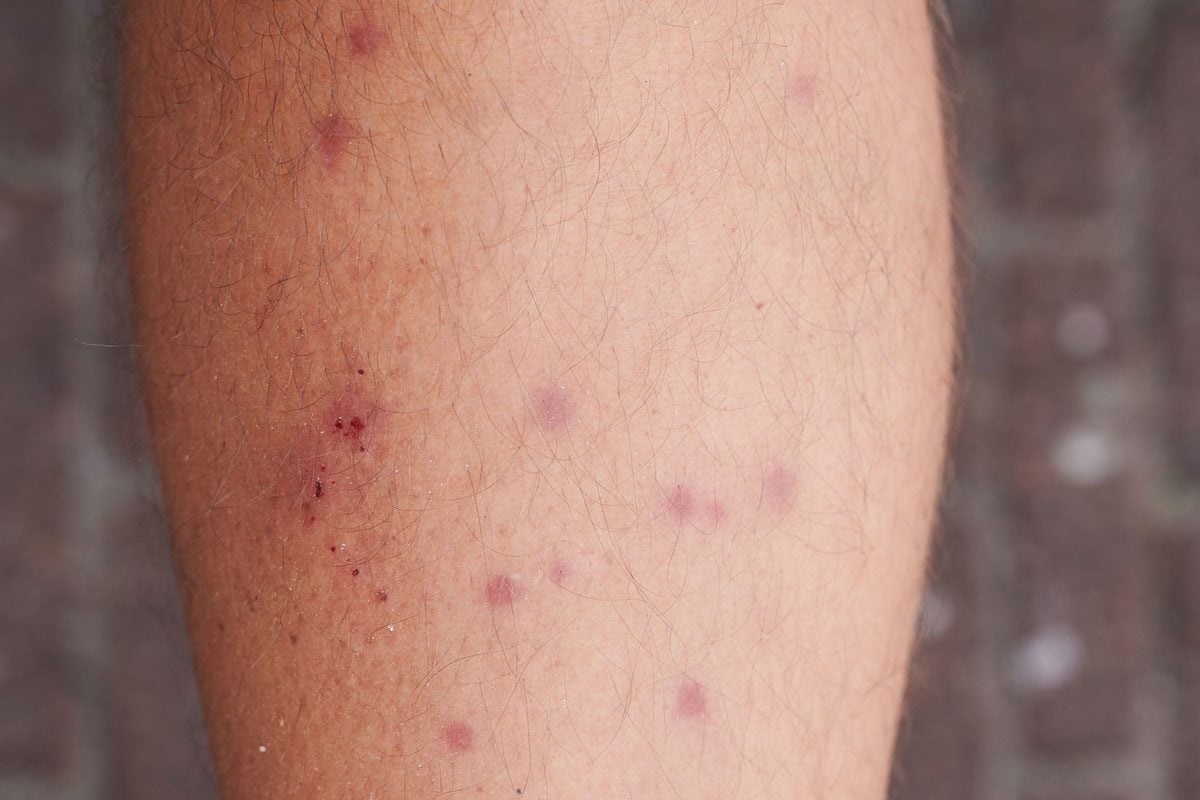Break out the magnifying glass to get a better look at the microscopic mite, a parasitic organism that can make your skin crawl (and itch).

Mite Bites: What To Know

Nearly invisible to the naked eye, mites are a category of scavenger or parasitic arachnids (related to spiders and ticks) that attach themselves to a living host — plants, insects, pets and people. They feed off sloughing skin cells, animal dander and blood.
Not every adverse reaction from exposure to mites is due to biting; rashes and itching are also by-products of contact. The Mayo Clinic defines the resulting allergic skin irritation as contact dermatitis.
Although not considered life-threatening to humans, mites are known to provoke hay fever, spark asthma attacks or exacerbate eczema in people who suffer from these conditions.
On This Page
Do Mites Bite People?
Some do. Some don’t.
Among the hundreds of species living in North America, only a handful will actually sink their “teeth” into human and animal flesh. If one does bite you, mites are so small you probably won’t even know you’ve been bitten unless a rash appears.
Which Types of Mites Bite?
The types of mites that bite:
- Scabies. These mites infest and burrow into the top layer of skin to lay their eggs. In dogs, scabies can cause mange.
- Straw itch mites. Humans are usually bitten when they come into contact with straw, hay, grasses, leaves or seeds.
- Demodex mites. Primarily found around hair follicle glands of the face.
- Rodent and bird mites. When a domestic animal or avian host dies or abandons its nest, these mites turn to feed on humans.
- Chiggers. The most common biting mite. Chigger larvae use their jaws to cut the skin, then inject skin-digesting saliva that, once liquified, is sucked up.
Among the non-biting mites (like dust and clover mites), contact can cause symptoms such as nasal congestion.
What Do Mite Bites Look Like?
Bites from mites generally appear as itchy, hard bumps or raised red patches of skin that can also be accompanied by blistering.
- Scabies bites look like pink pimples. (See below.)
- Straw itch mites usually leave red marks on the shoulders or around the neck.
- Demodex mites create dry, red patches, typically on the face.
- Rodent and bird mite bites create a red, swollen rash that can appear anywhere on the body, along with extreme itching. Also, learn about mold mites.
- Chiggers usually make tiny holes in clusters around the waist or lower legs.
If you suspect scabies, seek medical attention right away. Scabies are highly contagious and mites can live under the skin for several months.
How To Treat Mite Bites
Some mite bites remain localized and don’t spread. Others, like scabies, are highly contagious.
For a scabies infection, the Centers for Disease Control and Prevention (CDC) recommends the following:
- Treat infected skin with a doctor-prescribed scabicide lotion or cream;
- Examine and treat any member of the household at the same time;
- Wash and dry bedding, clothing and towels at hot temperatures;
- Seal non-washable items in plastic bags for at least 72 hours;
- If skin sores appear infected, treat with antibiotics prescribed by a doctor.
How To Prevent Mite Bites
To get rid of mites, you must eliminate the host or hosts. In a lot of cases, that can be difficult. Toxic pesticides only work temporarily and aren’t recommended if you have children and pets. Still, there are things you can do to reduce the chances of getting a mite bite indoors:
- Vacuum regularly;
- Wash linens and clothing in hot water (130 to 140 F);
- Wrap mattresses, pillows and cushions with anti-allergy covers;
- Seal food containers tightly;
- Use home dehumidifiers (mites prefer moist environments).
To reduce the chances outdoors:
- Avoid walking in long tall grasses
- Apply insect repellent
- Wash clothing and take a hot shower after leaving an infested area
If you get a mite bite, don’t scratch it! This could lead to an infection. Instead, head to your local pharmacy to pick up an over-the-counter oral antihistamine and/or a topical cream to help control the itching.




















